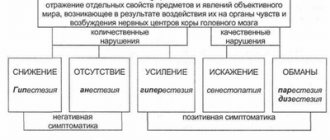Various events, joyful and anxious, accompany a person throughout life. Pleasant moments inspire and promote a positive attitude. Traumatic situations from which no one is immune are sometimes difficult to comprehend and withstand. They lead to emotional decline and depression. Excessive workload, increased responsibility at work, family crises - all these are causes of stress that causes apathy and depression. To eliminate psychological discomfort, the body begins to develop psychological defenses - internal attitudes and behavioral reactions. Various defenses are, as a rule, processes at the subconscious level that are formed throughout life.
Distorted reality is a form of psychological defense
Psychological attitudes that provide emotional comfort have, on the one hand, a positive effect, relieving anxiety and anxiety, allowing you to maintain a sense of self-sufficiency. On the other hand, they distort reality and are a form of self-deception. By distorting reality, psychological defense, in this case, immerses a person in a transformed reality, thereby presenting a certain danger. In order to protect yourself from traumatic emotions, which can be seen as the causes of stress, a person has various psychological defenses in stock. Among them are the following:
• Rationalization • Devaluation • Projection • Repression • Sublimation
Psychological defense - rationalization
People who have experienced discomfort from failure, the collapse of a dream, begin to look for reasons that would justify them. The subconscious helpfully offers options: an overly picky teacher, a tyrant boss, an eccentric wife - all these thoughts switch attention to another object. In his own eyes, a person feels right and does not see his mistakes. This model of behavior also includes parents who raise their hands against their child. Aggression, dissatisfaction with life, and other causes of stress are reflected in the baby, while adults reassure themselves that this is for good purposes. This psychological defense provides only temporary relief, smoothes out anxiety, and dulls conscience. Most importantly, it does not create a constructive model of behavior and does not contribute to solving internal problems.
crowding out
This method of defense is associated with partial amnesia. The traumatic situation is repressed into the subconscious; a person can only remember it under hypnosis. In particular, Freud, studying the numerous neuroses of patients, put forward the theory that psychogenic factors, in which he saw the causes of stress, go deeper into the subconscious area. When the unconscious becomes conscious, the neurotic syndrome disappears. Repression, as a psychological attitude, is widely played out in films. More common is partial movement of information into the subconscious area. For example, a person completely forgets situations where he behaved unworthily and showed himself dishonestly. At first glance, this saves you from remorse. But hidden guilt can cause psychosomatic diseases - migraine, gastritis, hypertension. The best option is to be aware of the situation, even if the person in it looks unsightly. Reframing will help you draw conclusions and change behavior.
Childhood Perceptual Disorders
Child psychiatry is a broad field that overlaps with neurology and psychology. A child psychiatrist must, on the one hand, be comprehensively oriented in the field of child psychology, mechanisms of psychological defense, characteristics of emotional reactions and behavior, manifestations of acute and chronic stress, anxiety, and depressive symptoms in children. On the other hand, many disorders in childhood are the result of damage to certain brain structures, and a child psychiatrist must know the basics of neurology, be able to read the results of an electroencephalogram, evoked potentials and magnetic resonance imaging. Since many neurological/mental disorders in children are genetically determined, in my opinion, it is ideal to start with a genetic examination of the child. It is not surprising that there is a shortage of such specialists. Neuropsychiatric diseases in children are very diverse and differ from similar diseases in adults.
Diseases associated with stress
Typically, mild variants of the disorder occur during acute and, especially, chronic stress. These are acute reactions to stress, other anxiety spectrum disorders, including phobias that are so common in children, as well as sleep disorders. Unfortunately, parents rarely turn to specialists for these diseases, as they consider them to be the norm, or confuse them with negative childhood reactions or character traits. Depression in childhood and adolescence manifests itself completely differently than in adults. Children may become overly active or, conversely, lethargic and apathetic; they may eat less, lose appetite, have trouble falling asleep, give up favorite games, and become disobedient or whiny. Children may have nightmares or other fears, self-harm, and tics. For children, somatization is a very common phenomenon - complaints about disorders of internal organs due to mental disorders, dysfunction of the autonomic nervous system. Adolescents suffering from depression are more likely to experience irritability, quarrels for no apparent reason, and sleep disturbances. The lives of children depend entirely on those around them, so quarrels or experiences of parents, negative events in the family, and sudden changes in the environment have a serious impact on them.
In the treatment of the described disorders, we adhere to the principle of minimizing the use of drugs. Anxious and depressive conditions can be treated using currents of different frequencies and amplitudes (tDCS, tACS), neuromodulation (tDCS + simultaneous training with a psychologist), psychotherapy, and biofeedback techniques (BFB). Antidepressants are sometimes (rarely) prescribed for teenagers. Children's phobias stand apart - fear of the dark, fear of animals, such as spiders or insects, fear of heights, fear of water. These phobias are usually easily corrected by our psychotherapists using systematic desensitization.
ADHD
Attention deficit hyperactivity disorder occurs quite often at the reception. At the onset of the disease, parents of children with ADHD may attribute problems with concentration and excessive activity to the child’s lack of organization, laziness, and disobedience. A simple electroencephalogram, as a rule, reveals disturbances in brain function and the distribution of rhythms characteristic of an earlier age. Sometimes the situation is more complex, and MRI reveals structural abnormalities, such as a lack of fibers in the ligaments that connect brain structures. For ADHD, we use neuromodulation, tDCS, nasal peptide electrophoresis, biofeedback and sessions with a psychologist and psychotherapist, including family psychotherapy. To achieve results, it is optimal to combine several methods. Medication is sometimes used for moderate and more severe ADHD.
Autism
Today this is a very popular diagnosis. I come across mothers who are sure that their child has autism, and even reading the criteria for autism on the International Classification of Diseases (ICD) website cannot convince them otherwise. The main symptoms of autism are stereotypies (the child makes the same movements, a lack of desire to contact others, problems with socialization), a reduced response to the emotions of even close people (lack of emotional contact). More detailed descriptions of how autism manifests itself by year can be read on any website, including ours. Treatment for autism is associated with even more myths. Instead of conventional psychotherapeutic techniques such as ABA, parents send their children to work with dogs or dolphins, give them chelating drugs even when the level of metals in the blood is normal, and follow a GCF (gluten-free, casein-free) diet without testing for gluten and casein sensitivity.
Children with autism spectrum disorder are often prescribed antipsychotic medications to reduce agitation or aggression. These drugs literally “numb” the child and harm his brain. We do not prescribe antipsychotics for autism; instead, we work to identify and eliminate the cause of anxiety (for example, ear pain or other inflammation can cause agitation), set up communication (special cards, develop your own symbolic language, etc.), and create a comfortable environment for child where he can develop.
Impaired mental function.
This is the most common problem in children. We need to start working with such a patient with diagnostics. There are many causes of mental retardation, from genetic to infectious (cytomegalovirus, herpes, Epstein-Barr virus), toxic, hormonal, and also associated with brain abnormalities (hydrocephalus, etc.). Diagnosis should begin with genetic analysis. The best option today is a genome-wide analysis, in which all the patient’s genetic information is “read”. When conducting genetic analysis, it is also possible to find out the features of pharmacogenetics - which drugs are optimal for the treatment of certain diseases, what side effects of drugs are possible. Another important study is MRI, optimally with tractography. This study shows whether there are abnormalities in brain structures. MRI data is associated with prognosis (more disorders - worse prognosis) and sometimes provide information about the causes of the disorder (for hydrocephalus, demyelination, etc.). Diffusion tensor imaging or tractography provides important information. Typically, in autism, connections between the frontal and temporal lobes and, especially, the anterior cingulate cortex are disrupted, and with delayed speech development, the disturbances are localized in the posterior-inferior region of the frontal lobe of the left hemisphere. Often ZPR is accompanied by epi-activity. An electroencephalogram shows the presence of abnormal activity and helps make a diagnosis. It is also worth excluding infectious causes of the disease; appropriate tests are done for this. Treatment depends on the cause of mental retardation. In case of epi-activity, appropriate drugs are prescribed to normalize the condition; in case of infections, antiviral and antibacterial drugs are prescribed; in case of speech disorders, speech zones are stimulated using tDCS and neurobiomodulation.
Schizophrenia
From my point of view, schizophrenia in a child is such a rarity and exotic that there is nothing to talk about it. Previously, the diagnosis of schizophrenia was given to autistic children and children with mental retardation. Today this practice is gradually disappearing, but in some places, especially among doctors of the old school, it may persist. In my practice, most patients diagnosed with schizophrenia have a disorder in brain structure or function, either a neuroinfection or an autoimmune process. Based on this, it is important to conduct research (MRI, EEG, tests) before starting to take prescribed antipsychotics. Perhaps the child needs completely different medications.
About psychotropic drugs
I strive to prescribe a minimum of psychotropic drugs to my patients. When it comes to children, I approach the prescribing of drugs with double caution (in psychiatry it is easier to prescribe drugs than to stop them). Psychotropic medications have many side effects and in many cases cause more harm than good. Before prescribing medications, you should try to stabilize the condition using non-drug methods, from the effects of currents and magnetic fields (TMS) on certain areas of the brain to working with a clinical psychologist and biofeedback.
Think before giving your child any drugs
Separately, it should be noted the pointlessness and danger of prescribing drugs without diagnosis. Thus, antipsychotic drugs can worsen symptoms in some types of organic brain damage with epi-activity. I’m not talking about the mass of side effects, which are even more pronounced in children than in adults. So, do not rush to give your child antipsychotics and antidepressants, which are often prescribed by psychiatrists, and do not rush to stuff him with nootropics (usually recommended by neurologists), vitamins and nutritional supplements, amino acids and special diets based on “energy field analysis.” It is important to first understand what is happening to the child, that is, make a diagnosis, and only then begin treatment.
Also, you may be interested in the following materials on our website:
1.
2.
3.
4.
Projection
One type of psychological defense is projection, when an individual attributes unseemly motives and actions to other people. For example, an envious person accuses others of envy, a stupid person thinks everyone is stupid, and an aggressive person sees aggression in others. A person’s desire to believe that others have shortcomings inherent in himself is what projection consists of. Irritability, outbursts of anger, suspiciousness - various causes of stress - are transferred to another. The person himself forgets that these are his problems and distances himself from them. The best method of getting rid of psychological projection is healthy self-criticism.
There is no shame in going to a psychiatrist
If before I was the most inconspicuous person at school, now anyone can come up to me and say: “I feel bad, what should I do?”
First of all, I advise no one to be afraid to ask for help. This is just stupid. If your leg hurts, you go to the doctor. If it’s hard for you and some kind of mental thing is preventing you from living normally, then why shouldn’t you see a doctor about it?
If your parents or friends don't believe you, you need to think about yourself first.
Not about what people will say, but about what will happen to you. Because, as my psychiatrist says, it’s better to correct now than to treat later. If everything is not serious yet, then there is a chance of recovery in a month and a half, and your health will remain in order forever. And if you live for a year in a serious condition, you will have to undergo very long and difficult treatment.
In large cities there are crisis centers for minors, they are free and accept without parents, you can go there and get advice. Sometimes you can trust the school psychologist. He won’t treat you, but he will help you overcome your fear of going to the doctor and advise you on the best way to tell your parents and friends about it.
Knowing yourself
Psychological methods of defense during a traumatic situation can smooth out emotional discomfort. But prolonged stay within the transformed reality reduces adaptation to the surrounding world and, rather, can cause neurosis and depression. The various causes of stress that lead to internal conflicts must be felt and brought to a conscious level. The ability to know yourself will give you the opportunity to become a mature person and find spiritual harmony. Possessing clear thinking, the ability to look at oneself from the outside, optimism and a thirst for life, a person acquires a high level of psychological security.
Far and near
Disorders of sensations and perception of received data are closely interrelated. Receptors that receive information about the surrounding reality transmit nerve impulses to the brain, where analysis and processing of the received information occurs and a response occurs in the form of an idea of an object or phenomenon that affects the receptors. Moreover, some of the receptors should receive such an effect through direct contact with the object, and some through space. So, for example, taste sensations arise when food enters the mouth and tongue. But vision allows you to see objects at a distance. The perception of received information through various senses and receptors is the main mechanism for human cognition of the world. Perceptual disorders are a complex physiological and psychological problem.









